
Here are more of our daily advent videos packed with fun and facts from the Tudor period.
[Read More...]
Here are more of our daily advent videos packed with fun and facts from the Tudor period.
[Read More...]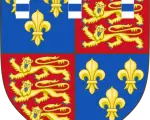
The brief life of Edward Plantagenet, 17th Earl of Warwick, can be interpreted as an exercise in the harsh realpolitik of fifteenth-century England. The only son and heir of George, Duke of Clarence, Edward was born on 25 February 1475 in Warwick; his sister Margaret had been born two years previously. He was the nephew of the first Yorkist king, Edward IV, who had seized the throne from Henry VI in 1461. Edward’s mother Isabel, sister of Richard III’s consort Anne Neville, died when he was an infant, and his father was executed for treason in 1478. The lands of Clarence were seized by the Crown, including those belonging to his infant son. In 1481, Edward was placed in the wardship of Thomas Grey, Marquis of Dorset. He attended the coronation of his uncle Richard in 1483 and was knighted at the investiture of Richard’s heir, also named Edward, at York in September. The prince died the following year and it is possible that the king considered the Earl of Warwick as his heir.
[Read More...]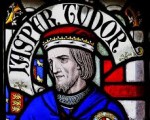

Here are daily short videos of Claire Ridgway in the build-up to Christmas. Each day Claire will be going live on Facebook and we’ll put those videos here too. Just a little Tudor Christmas fun each day.
[Read More...]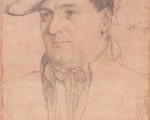
11th December:
1577 – Burial of Benjamin Gonson, Treasurer of the Navy and son of William Gonson, Vice-Admiral of Norfolk and Suffolk from 1536 until 1543. Gonson was buried at St Dunstan’s Church.
1589 – Death of Patrick Lindsay, 6th Lord Lindsay of the Byres, at Struthers Castle in Fife, Scotland. Lindsay was a supporter of the Protestant Reformation, and one of the lords of the congregation. He was one of Mary, Queen of Scots’ guardians when she was imprisoned at Lochleven and was a Privy Councillor after she was deposed as queen.
1607 – Death of Roger Manners, member of Parliament and Constable of Nottingham Castle. He was buried at Uffington Church in Rutland.
1608 – Burial of Douglas Sheffield (née Howard), Lady Sheffield, at St Margaret’s Church, Westminster. Douglas was the eldest daughter of William Howard, 1st Baron Howard of Effingham, and the wife of John Sheffield, 2nd Baron Sheffield. Before her marriage, she served as a Maid of Honour to Elizabeth I. After her husband’s death, she had an affair with Robert Dudley, 1st Earl of Leicester, which resulted in the birth of a son, Sir Robert Dudley, the explorer and cartographer, born in 1574. Douglas claimed that she and Dudley had married in secret when she was pregnant in late 1573, but she could not provide any evidence to support this when her son sought to claim his father’s and uncle’s titles after Elizabeth I’s death. Douglas went on to marry Sir Edward Stafford in 1579.
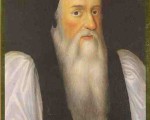
4th December:
1506 – Birth of Thomas Darcy, 1st Baron Darcy of Chiche, courtier and administrator. He was the son of Roger Darcy, Esquire of the Body to Henry VII, and his wife, Elizabeth (née Wentworth). Darcy served as a Privy Councillor in Edward VI’s reign, and also Captain of the Yeoman of the Guard and Lord Chamberlain of the Household. He was arrested for supporting the Duke of Northumberland’s bid to place Lady Jane Grey on the throne, but was pardoned in November 1553.
1514 – Death of Richard Hunne, merchant tailor and leading member of the Lollard community in London. He had been arrested for heresy, and imprisoned in “Lollards’ Tower” in St Paul’s Cathedral on 14th October after the discovery of a Wycliffite Bible at his home, and his body was discovered hanging in his cell from a silk girdle. It was claimed that he had committed suicide, but a coroner’s jury ruled that the hanging had been faked, and that he had been murdered.
1531 – Execution of Rhys ap Gruffudd for treason. He was beheaded after being accused of plotting against the King, although his biographer, R.A. Griffiths, points out that his trial was a “show trial” consisting of contrived testimonies and coached witnesses.
1555 – Papal sentence was passed on Thomas Cranmer in Rome, depriving him of his archbishopric “and of all ecclesiastical dignities”. Permission was also given for the secular authorities to decide on his fate.
1557 – Death of Robert King, Abbot of Thame and Bishop of Oxford. He was buried in Oxford Cathedral. King was one of the judges who sat in judgement at the trial of Thomas Cranmer in 1555.
1585 – Death of John Willock, physician and Scottish reformer, at Loughborough in Leicestershire. He was buried at his church, All Saints, in Loughborough. Willock became the Chaplain of Henry Grey, Marquis of Dorset, and father of Lady Jane Grey, in the 1540s.
1595 – Death of William Whitaker, theologian and Master of St. John’s College, Cambridge, at the master’s lodge after going to bed with a hot “ague”. He was buried at St John’s. His works included Liber precum publicarum (1569), Ad rationes decem Edmundi Campiani jesuitæ responsio (1581), responses to Nicholas Sander and Edmund Campion, Disputatio ad sacra scriptura and Adversus Thomae Stapletoni (1594).
1609 – Death of Alexander Hume, Scottish poet and writer. He is known for his 1599 “Hymnes, or Sacred Songs”, which includes his great poem “Of the Day Estivall” which describes a summer’s day, from dawn until dusk.
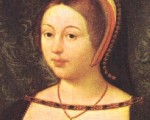
Margaret Tudor, Queen of Scotland, was born on 28th November 1489 at Westminster Palace. Her parents were King Henry VII and Elizabeth of York, and she was the couple’s second child and eldest daughter. The couple named her Margaret after her paternal grandmother, Lady Margaret Beaufort, and she was baptised at St Margaret’s Church, Westminster, on 30th November.
Margaret spent her childhood at Sheen and at Eltham Palace but was sent to Scotland at the age of thirteen to marry King James IV following the 1502 Treaty of Perpetual Peace between England and Scotland. Margaret and James were married by proxy on 25th January 1503 at Richmond Palace and Margaret set off from Richmond Palace to travel to Scotland on 27th June 1503, spending eleven days with her grandmother, Lady Margaret Beaufort, at Collyweston in Northamptonshire on the way. Stops included Grantham, York, Durham, Newcastle and Berwick, which was, at the time, held by England. Margaret arrived in Scotland on 1st August and the wedding took place took place in the chapel of Holyroodhouse, Edinburgh, on 8th August 1503. The marriage ceremony was performed by the Archbishop of Glasgow and the papal bulls were read by the Archbishop of York.
[Read More...]
Thank you so much to Oscar for inspiring this week’s Claire Chats with his question “What did the Tudors use to wipe their bottoms?”. In the following video, I answer that question and also talk about Tudor toilets.
[Read More...]
Today is Accession Day, a day that was celebrated throughout the reign of Elizabeth I and the reigns of many of her successors. It commemorated the day that Elizabeth I came to the throne on the death of her half-sister, Queen Mary I, on 17th November 1558. You can click here to read about how Accession Day was celebrated, but in today’s Claire Chats video I’m talking about the 17th November 1558 and the story of Elizabeth receiving the news that she was queen.
[Read More...]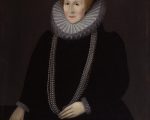
Elizabeth Hardwick, more popularly known as Bess of Hardwick, was the daughter of John Hardwick and Elizabeth Leeke and was born in 1527. The Hardwicks were a prosperous Derbyshire gentry family. Her father died in 1528 and her mother remarried, marrying Ralph Leche of Chatsworth. Bess is today remembered as a builder of great houses, including Chatsworth, Hardwick Hall and Oldcotes. Her name continues to be associated with the rhyme “Hardwick Hall, more glass than wall”. She was, in the words of her biographer Mary S. Lovell, “the most powerful woman in the land next to Queen Elizabeth I’”. Bess was, according to Lovell, “a serious achiever” and it was through her four husbands that she gradually acquired notable wealth and status.
[Read More...]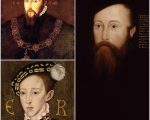
Thank you so much to historical novelist Janet Wertman for inspiring today’s Claire Chats on the subject of just who signed Thomas Seymour’s death warrant – was it King Edward VI or was it Edward Seymour, Duke of Somerset and Lord Protector? I look at what the sources say.
[Read More...]
This weekend, people around the UK will have been marking the 5th of November by attending firework displays, letting off fireworks in their backyards, lighting bonfires and burning “the guy”. For many, it’s just a bit of fun, for others it’s time to worry about the pets, and for others, it’s a time to remember the plot that sought to kill a king.
On the night of 4th/5th November 1605, Guy Fawkes was caught with thirty-six barrels of gunpowder in the cellars beneath Westminster. The idea was to blow up the House of Lords at the opening of Parliament on the 5th November, and to assassinate King James I.
[Read More...]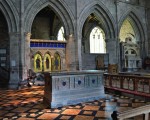
On this day in 1456, Edmund Tudor, 1st Earl of Richmond and father of King Henry VII, died from the plague at Carmarthen Castle in Wales.
Edmund was the eldest son of Owen Tudor and Catherine of Valois (widow of Henry V and mother of Henry VI). He was born around 1430 in Much Hadham, Hertfordshire, and is sometimes known as Edmund of Hadham. Edmund was made Earl of Richmond by his step-brother, Henry VI, on 23rd November 1452 and his brother, Jasper, was made Earl of Pembroke. The brothers were knighted on 5th January 1453 and in March 1453, at the Reading Parliament, they received recognition as the king’s true and legitimate brothers.
[Read More...]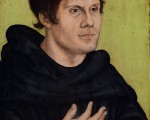
Today, 31st October 2017, is the 500th anniversary of the beginning of the Protestant Reformation. German Reformer Philipp Melancthon recorded that “Luther, burning with passion and just devoutness, posted the Ninety-Five Theses at the Castle Church in Wittenberg, Germany at All Saints Eve, October 31”, and Luther sent a copy of The Ninety-Five Theses (proper title: Disputation of Martin Luther on the Power and Efficacy of Indulgences) to Albert, Archbishop of Mainz, and the Bishop of Brandenburg along with a letter protesting against the sale of indulgences.
Martin Luther’s 95 Theses had a major impact. The resulting controversy over Luther’s letter and his Theses is seen as the beginning of the Reformation, the schism from the Catholic Church and the start of Protestantism.
[Read More...]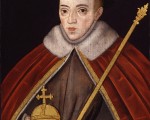
On this day in history…
30th October:
1485 – The founder of the Tudor dynasty, Henry Tudor, was crowned King Henry VII at Westminster Abbey. Click here for more.
The Tudor chronicler, Raphael Holinshed, recorded:
“…with great pompe he rowed unto Westminster, & there the thirtith daie of October he was with all ceremonies accustomed, anointed, & crowned king, by the whole assent as well of the commons as of the nobilitie, & called Henrie the seaventh of that name…”
His biographer, Thomas Penn, describes how this was the occasion that Henry was united with his mother, Lady Margaret Beaufort, whom he’d not seen for fourteen years. Margaret was said to have “wept marvellously”.
Henry Tudor had claimed the crown of England after defeating Richard III at the Battle of Bosworth Field on the 22nd August 1485, and had actually been unofficially crowned with Richard’s crown on the battlefield that day.

On this day in history…
23rd October:
1545 – Death of Sir Humphrey Wingfield, lawyer, Speaker of the House of Commons (1533-36) and patron of humanist education, at Ipswich.
1556 – Death of Sir John Gresham, brother of Sir Richard Gresham and Lord Mayor of London (1547). He was buried in the church of St Michael Bassishaw.
1570 – Burial of John Hopkins, poet, psalmodist and Church of England clergyman, at Great Waldingfield. Churchman and historian John Bale described Hopkins as “not the least significant of British poets of our time”. Hopkins’ psalms were included in the 1562 “The whole booke of Psalmes, collected into Englysh metre by T. Starnhold, J. Hopkins & others”
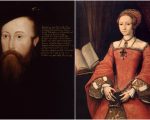
In today’s Claire Chats, Claire considers the primary source evidence for Thomas Seymour’s behaviour with Elizabeth, the future Elizabeth I, between 1547 and 1549.
[Read More...]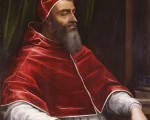
On this day in history…
25th September:
1513 – Vasco Núñez de Balboa, the Spanish explorer, reached the Pacific Ocean. He was the first European to have discovered the Pacific Ocean from the New World.
1525 – Explorer, navigator and naval administrator Stephen Borough (Burrough) was born at Borough House, Northam Burrows, Northam in Devon, to Walter Borough and his wife Mary Dough.
1534 – Death of Pope Clement VII in Rome from eating a death cap mushroom. He was laid to rest in Santa Maria sopra Minerva.
1554 – Death of Richard Sampson, Bishop of Coventry and Lichfield, and former President of the Council of the Welsh Marches, at Eccleshall in Staffordshire. He was buried in the parish church at Eccleshall. Sampson had acted as the King’s Proctor at the fall of Anne Boleyn in 1536.
1555 – The Peace of Augsburg, or Augsburg Settlement, was signed by Charles V, Holy Roman Emperor, and the princes of the Schmalkaldic League at Augsburg.
1558 – Gertrude Courtenay, Marchioness of Exeter, made her will. She died soon after and was buried in Wimborne Minster, Dorset. Gertrude was the mother of Edward Courtenay, 1st Earl of Devon, who was imprisoned for his part in Wyatt’s Rebellion in 1554. Gertrude, herself, was imprisoned in 1538, and her husband was executed for treason.
1584 – Death of Thomas Copley, Roman Catholic, in exile near Antwerp. He had served Elizabeth I as Commissioner of the Peace for Surrey, and she was godmother to his son, Henry, but he lost royal favour when he converted to Catholicism in 1563. He left England in 1570, being unable to accept royal supremacy and Elizabeth I’s religious measures.
1586 – Mary, Queen of Scots was moved to Fotheringhay Castle in Northamptonshire, and Elizabeth finally backed down and agreed to the appointing of 36 commissioners to act as judges in her trial.
1594 – Death of Gregory Fiennes, 10th Baron Dacre, at Chelsea. He was buried in Chelsea Old Church.
1602 – Death of William Redman, Bishop of Norwich, at the Episcopal Palace. He was buried in the cathedral choir.
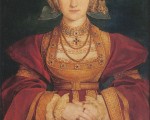
As today is the anniversary of the birth of Anne of Cleves on 22nd September 1515, I thought it was fitting to share some links to Anne of Cleves resources here on the Tudor Society site and to also share some recommendations for further reading.
[Read More...]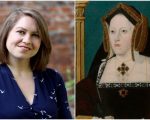
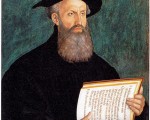
On this day in history…
11 September:
1540 – Death of Thomas Kytson (Kitson) the Elder, merchant, Sheriff of London and builder of Hengrave Hall in Suffolk. He died at Hengrave and was buried in the church there.
1561 – Mary, Queen of Scots began her first royal progress, visiting Holyrood Palace, Edinburgh Castle, Linlithgow Palace, Stirling Castle, Kincardine Castle, Leslie Castle, Perth, Dundee, St Andrews, Cupar, Falkland Palace and Edinburgh, between the 11th and 29th September.
1572 – Pope Gregory XIII ordered a joint commemoration for the defeat of the Ottoman troops by the Holy League at the Battle of Lepanto on 7th October 1571, and for the St Bartholomew’s Day Massacre of the Huguenots in France, in August 1572.
1581 – Death of Barnaby Fitzpatrick, 2nd Baron of Upper Ossory, at Dublin, in the home of a surgeon, William Kelly. In his youth, Fitzpatrick had been friends with Prince Edward (future Edward VI) and had been educated with him. He went on to serve his friend, when he became king, as a Gentleman of the Privy Chamber.
1605 – Death of Sir Thomas Tresham the Younger, Catholic recusant politician, at his home, Rushton Hall, in Northamptonshire. He was buried at St Peter’s Church, Rushton.
1613 – Death of Sir John Brograve, lawyer. He was buried at St Mary’s Church, Braughing, Hertfordshire in the Brograve Chapel. Brograve was one of the leading lawyers in the House of Commons in Elizabeth I’s reign.
1614 – Death of Sir Edward Phelips, Elizabeth I’s Sergeant-at-Law and Speaker of the House of Commons in James I’s reign. He died at Rolls House, London, and was buried at St Catherine’s Church, Montacute, Somerset.

On this day in history…
14th August:
1473 – Birth of Margaret Pole, Countess of Salisbury, the daughter of George, Duke of Clarence, brother of Edward IV, and his wife Isabel Neville. Margaret was born at Farley Castle, near Bath.
1479 – Date given as the birthdate of Katherine of York (Katherine, Countess of Devon), at Eltham Palace. Katherine was the daughter of Edward IV and Elizabeth Woodville, and she married Sir William Courtenay, the future Earl of Devon, in 1495.
1513 – William Parr, Marquis of Northampton and brother of Queen Catherine Parr, was born.
1539 – Death of Sir Peter Edgcumbe. Edgcumbe served as Sheriff of Devon and Cornwall at various times between 1494 and 1534, was at the 1513 Battle of the Spurs and was present at the Field of Cloth of Gold in 1520.
1620 – Burial of Katherine Hastings (née Dudley), Countess of Huntingdon, in Chelsea Old Church. Katherine was the daughter of John Dudley, Duke of Northumberland, and his wife Jane, and was married to Henry Hastings, 3rd Earl of Huntingdon. Katherine was buried in her mother’s tomb.
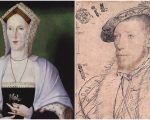
On this day in history, 14th August, two prominent Tudor people were born: Margaret Pole, Countess of Salisbury, in 1473, and William Parr, Marquis of Northampton, in 1513.
Margaret Pole, Countess of Salisbury, born on 14 August 1473, was the only surviving daughter of George, Duke of Clarence, and his wife, Isabel Neville. She was the niece of Edward IV and Richard III, and cousin of Elizabeth of York, Henry VII’s consort. Her brother, Edward, Earl of Warwick, was executed by Henry VII in 1499 in response to a request forwarded by the Spanish monarchs during the marital negotiations between Arthur, Prince of Wales, and Katherine of Aragon, since they feared that Warwick’s presence would encourage rebellion against the Tudor dynasty.
[Read More...]
Thank you to Roland Hui for letting me know about this online event.
Join 16th-century historians and bloggers at The Tudor Summit 2017 happening online on September 3 and 4! Speakers familiar to Tudor Society members include Nathen Amin (author and founder of The Henry Tudor Society), Natalie Grueninger (creator of On the Tudor Trail), author Tony Riches, Rebecca Larson (creator of Tudors Dynasty and Roland Hui (author and blogger at Tudor Faces). The keynote address will be given by historian Sarah Gristwood, author of ‘Game of Queens’.
[Read More...]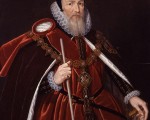
On this day in history…
31 July:
1544 – The future Elizabeth I wrote her earliest surviving letter to her stepmother, Catherine Parr. It was written in Italian and in a beautiful italic hand. Click here to read more about it.
1549 – Death of Edmund Sheffield, 1st Baron Sheffield, in Norwich. It is said that he was killed by a butcher called Fulke, while serving in the royal army against the rebels of Kett’s Rebellion. Apparently, he stumbled into a ditch and then was killed by a blow from Fulke. Sheffield was buried in St Martin’s at the Palace, Norwich.
1553 – Henry Grey, Duke of Suffolk, “was discharged out of the Tower by the Earle of Arundell and had the Quenes pardon.”
1574 – Death of John Douglas, Archbishop of St Andrews and educational reformer, in St Andrews. He was buried in the public cemetery. It is said that he died in the pulpit.
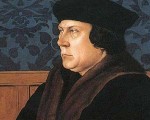
As it is the anniversary of the execution of Thomas Cromwell today, in this week’s Claire Chats video talk Claire talks about the primary sources accounts of Cromwell’s execution, his scaffold speech and the prayer he said. She talks about the controversy over his speech and what his prayer said about his faith.
[Read More...]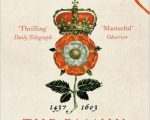
Thank you so much to those of you who completed our recent survey about Tudor books.
We already have recommended reading lists for Tudor monarchs and various Tudor topics – see the Recommended Reading category, but I thought it would be good to make a list of books that Tudor Society members would recommend, and here it is. Please do leave a comment if you’d like to recommend some books and I can then add them to the list – thank you!
[Read More...]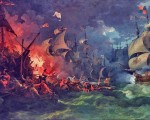
On this day in history…
24th July:
1534 – Jacques Cartier, the French explorer, landed in Canada, at Gaspé Bay in Quebec, and claimed it for France by placing a cross there.
1553 – Birth of Richard Hesketh, merchant and conspirator, in Lancashire. In 1593, Hesketh urged Ferdinando Stanley, 5th Earl of Derby, to lead a rebellion to claim the throne of England, through his descent from Mary Tudor, Queen of France. Stanley turned Hesketh in, and the latter was executed on 29th November 1593.
1567 – Mary, Queen of Scots was forced to abdicate. Her one-year-old son, James, became King James VI of Scotland with his uncle, Mary’s illegitimate half brother, James Stewart, Earl of Moray, acting as regent.
1594 – John Boste, Roman Catholic priest and martyr, was hanged, drawn and quartered in Durham after being accused of leaving and re-entering England without permission. He was canonized in 1970 by Pope Paul VI.
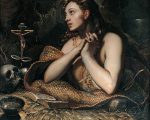
The Feast of St Mary Magdalene (or Magdalen), “apostle to the apostles” and the woman said to have witnessed Christ’s crucifixion and resurrection, has been celebrated on 22 July since the 8th century.
[Read More...]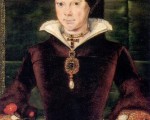
On 19th July 1553, thirteen days after the death of her half-brother, fifteen-year-old King Edward VI, thirty-seven-year-old Mary Tudor was proclaimed queen in place of her first cousin once removed, Lady Jane Grey, or Queen Jane.
The Chronicle of the Grey Friars of London records:
“Item the xix. day of the same monyth, [which] was sent Margarettes evyne, at iiij. of clocke at after-none was proclamyd lady Ma[ry to] be qwene of Ynglond at the crose in Cheppe with the erle of Shrewsbery, the earle [of Arundel], the erle of Pembroke, with the mayer of London, and dyvers other lordes, and many of the ald[dermen] and the kynges schrffe master Garrand, with dyvers haroldes and trompettes. And from thens cam to Powlles alle, and there the qwere sange Te Deum with the organs goynge, with the belles ryngynge, the most parte alle [London], and that same nyght had the [most] parte of London Te Deum, with bone-fyers in every strete in London, with good chere at every bone [fyer], the belles ryngynge in every parych cherch, and for the most parte alle nyght tyll the nexte daye to none.”
[Read More...]